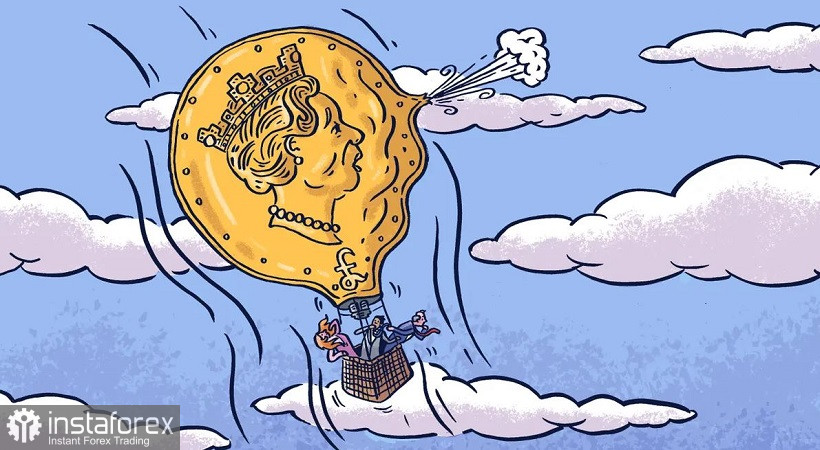In March 2020, GBP/USD reached 1.1411, its lowest point in almost 40 years. Now, only 200 points are separating the pair from hitting this target once again. Over the past five months, GBP/USD has dropped by 1,800 points, which indicates that the pair could very well reach this level.
However, GBP/USD would have to break below the support at 1.1560, which is the lower band of the Bollinger Bands indicator. Below it lies the key psychological level of 1.5000. A breakout below 1.5000 would open the way towards 1.1411.

In July, the pound sterling tried to advance amid hawkish signals and policy moves by the Bank of England, as well as soaring inflation. However, the pair's upward correction ran out of steam near 1.2300. GBP/USD failed to break through this level after unsuccessfully testing it for two weeks. Bearish traders seized the initiative in the market in mid-August, taking advantage of stronger USD and weaker GBP.
Overall, the UK currency could withstand the pressure from USD bulls. For example, GBP/USD remained in the 1.3000 area early this year, despite the US dollar's dominance in the market. The hawkish stance of the UK regulator gave support to the pair and bullish traders for quite a long period of time.
Now, despite the BoE's hawkish policy course, traders are increasingly doubting the pace of monetary tightening. The threat of stagflation is looming amid the economic slowdown in the UK, rising inflation, and the worsening energy crisis.
Speculation of a 25 bps hike at the next meeting of the Bank of England have weighed on the pound sterling. However, many experts believe that the UK central bank will increase the rate by 50 bps. The majority of economists polled by Reuters believe that the BoE will increase the bank rate by only 25 points. 25 out of 55 polled experts think the BoE will put its monetary tightening on hold in December. The continuing cost-of-living crisis, as well as prospects of rising energy prices in the future are likely to slow down consumer activity in the UK. This in turn would prevent the UK regulator from tightening its monetary policy aggressively.
The UK's bleak economic prospects are weighing down on the pound sterling. According to the latest data, the UK's GDP contracted in the second quarter of 2022 by 0.1%. Month-on-month, the British economy declined by 0.6% in June. During its meeting in August, the Bank of England predicted that the UK economy would enter a recession in the fourth quarter of 2022 amid soaring inflation and rising energy bills. Annual energy bills for average households could reach £4,650 from January 2023, up from the current level of £1,900-2,000.
The US dollar is going up in the meantime. On Monday, the US dollar index hit its 20-year high, reflecting high demand for USD in the FX market. Today, DXY continued its upward trend after a brief downward correction. The US dollar's upsurge was triggered by Jerome Powell's remarks on Friday. The Fed chairman stated that the US regulator would continue to raise interest rates and would keep interest rates high, despite the negative impact of this hawkish policy on the economy. As a result, markets are now pricing in a 70% probability of a 75 bps move in September.
The ongoing fundamental situation is pushing down GBP/USD, despite the pair already being at its lowest point in 2 years.
On the technical side, the pair is currently between the middle and lower band of the Bollinger Bands indicator on the D1 timeframe, as well as below all lines of the Ichimoku indicator. It has formed a bearish "Parade of Lines" signal. The pair's target is the lower band of the Bollinger Bands indicator at 1.1560 on the daily chart.





















